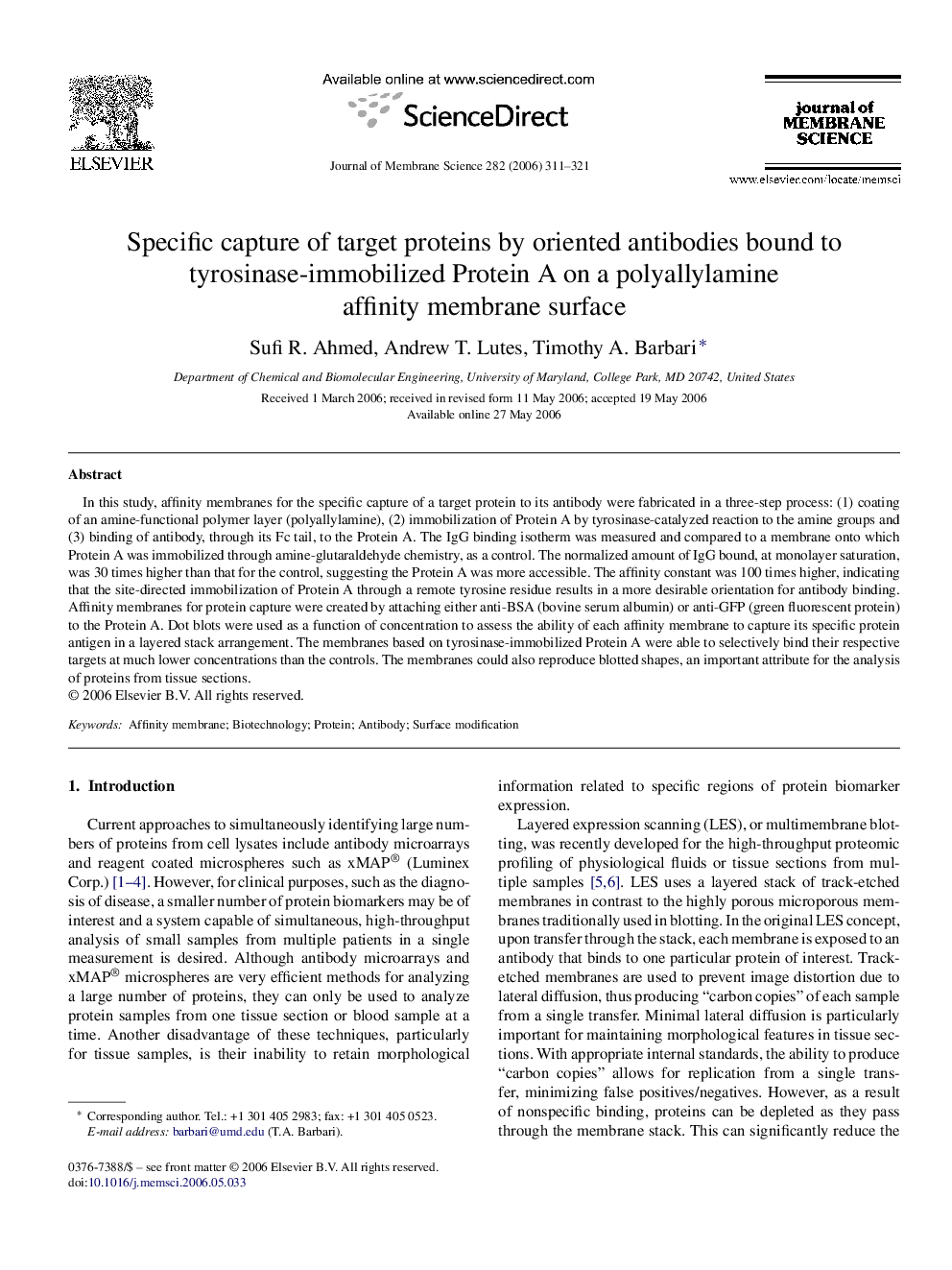| Article ID | Journal | Published Year | Pages | File Type |
|---|---|---|---|---|
| 639172 | Journal of Membrane Science | 2006 | 11 Pages |
In this study, affinity membranes for the specific capture of a target protein to its antibody were fabricated in a three-step process: (1) coating of an amine-functional polymer layer (polyallylamine), (2) immobilization of Protein A by tyrosinase-catalyzed reaction to the amine groups and (3) binding of antibody, through its Fc tail, to the Protein A. The IgG binding isotherm was measured and compared to a membrane onto which Protein A was immobilized through amine-glutaraldehyde chemistry, as a control. The normalized amount of IgG bound, at monolayer saturation, was 30 times higher than that for the control, suggesting the Protein A was more accessible. The affinity constant was 100 times higher, indicating that the site-directed immobilization of Protein A through a remote tyrosine residue results in a more desirable orientation for antibody binding. Affinity membranes for protein capture were created by attaching either anti-BSA (bovine serum albumin) or anti-GFP (green fluorescent protein) to the Protein A. Dot blots were used as a function of concentration to assess the ability of each affinity membrane to capture its specific protein antigen in a layered stack arrangement. The membranes based on tyrosinase-immobilized Protein A were able to selectively bind their respective targets at much lower concentrations than the controls. The membranes could also reproduce blotted shapes, an important attribute for the analysis of proteins from tissue sections.
